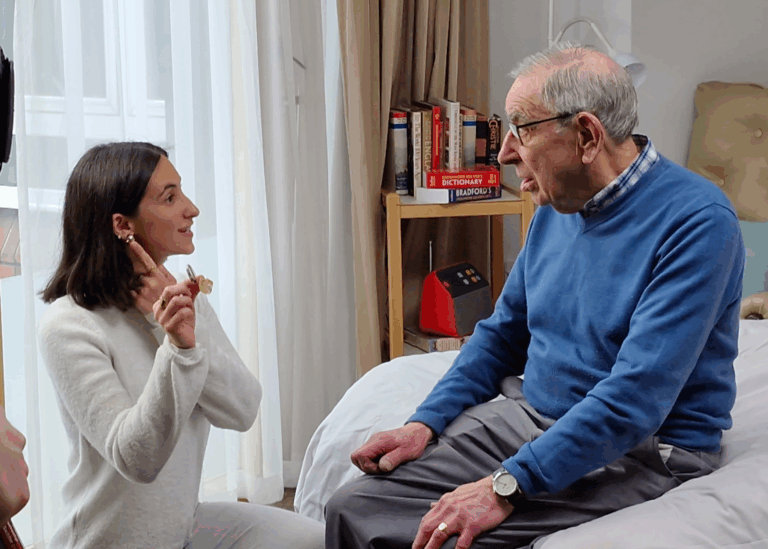Attendant-propelled wheelchairs
Attendant-propelled wheelchairs, sometimes called transit wheelchairs, are designed for individuals who require assistance from another person to move their wheelchair.
They are easily identified by their smaller back wheels, compared to the large wheels on self-propelled models.
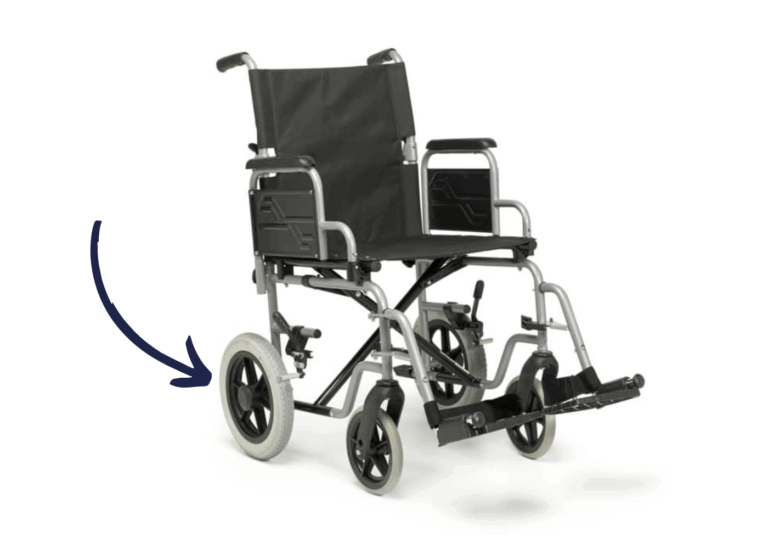
Attendant-propelled
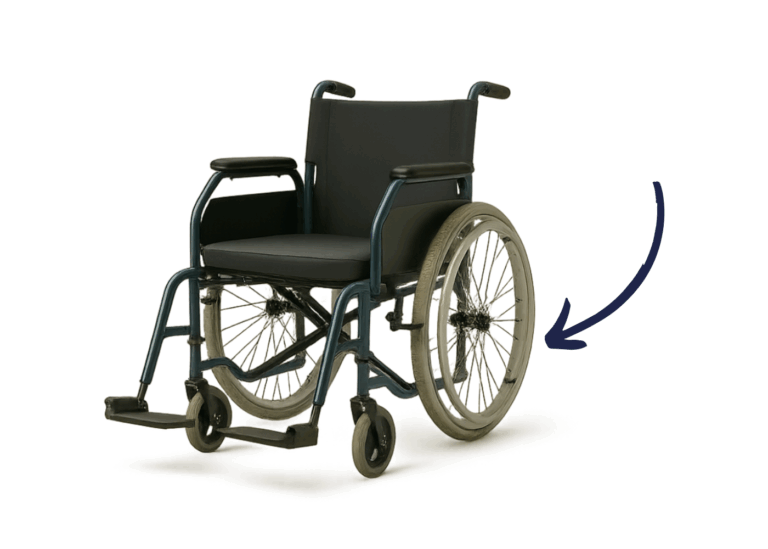
Self-propelled
__________________________________________________________________________________________________________________________________________________________________
Weight limit sticker

The seat

The brakes

The footplates

The backrests

The armrests

The lap belt

Important notes:
-
These are mobility aids, not designed for extended periods of sitting.
-
Ensure the wheelchair is professionally serviced at least once a year.
-
Look for a weight limit sticker and ensure the user does not exceed the specified capacity.
The seat
-
Some seats come padded, but most have a plain canvas base.
-
It is recommended to use a pressure cushion for comfort and pressure relief.
-
Cushions vary depending on individual needs.
-
Always check the cushion is positioned the correct way up and facing the right direction.
The brakes
-
Some models have brakes on the push handles, while others are located near the rear wheels.
-
Always apply the brakes whenever the wheelchair is stationary, including when
-
Someone is getting in or out of the chair.
-
The attendant steps away from the chair.
-
The footplates
-
Footplates must be in place when someone is seated.
-
Ensure footplates are fully folded up and out of the way when the person is getting in or out.
-
Check the person’s feet are correctly positioned in the footplates, in front of the footrest strap.
-
Correct foot placement helps avoid injury from the wheels.
- Carers should watch for wheelchair users trying to stand while footplates are down, as this can cause falls.
The backrest
-
The backrest is foldable, which is useful for storage in tight spaces, such as the back of a car.
-
Be careful not to trap your fingers or any part of the person’s body when folding or unfolding.
-
Always ensure both handles click securely into place before moving the chair.
The armrests
-
Some armrests fold back, while others detach, useful for storage or side transfers.
-
Armrests are side-specific – ensure they are placed correctly with the armrest padding facing outward.
-
Take care not to pinch fingers or the user’s body when removing or reattaching.
-
Always check both armrests click securely into place before use.
- When lifting the folded wheelchair never lift from the armrests as they are not secure and may detach
The lap belt
-
-
Lap belts are not required for moving, but may offer a sense of security.
-
Particularly useful on slopes or kerbs.
-
NEVER use the lap belt as a restraint.
-
ALWAYS obtain consent from the person before using the lap belt.
-
Folding a wheelchair


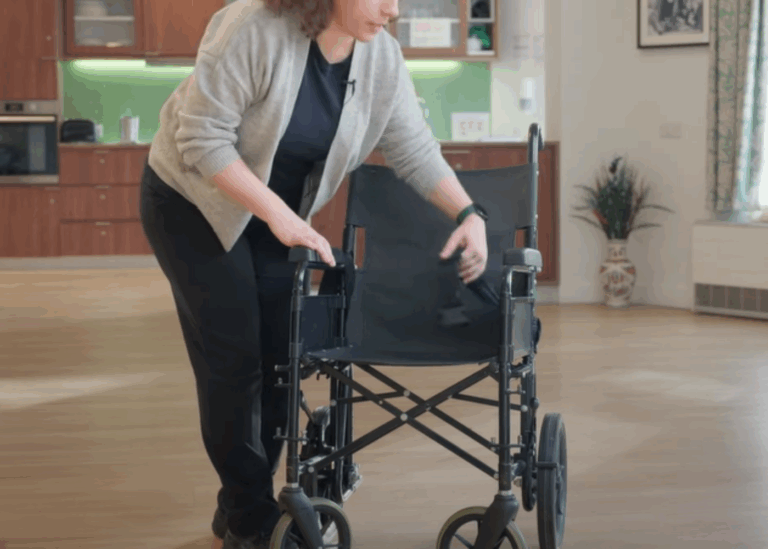

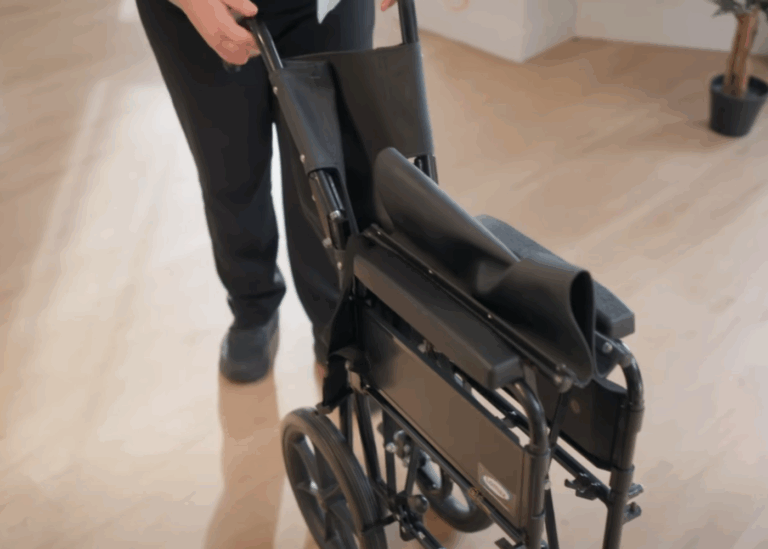
Unfolding a wheelchair
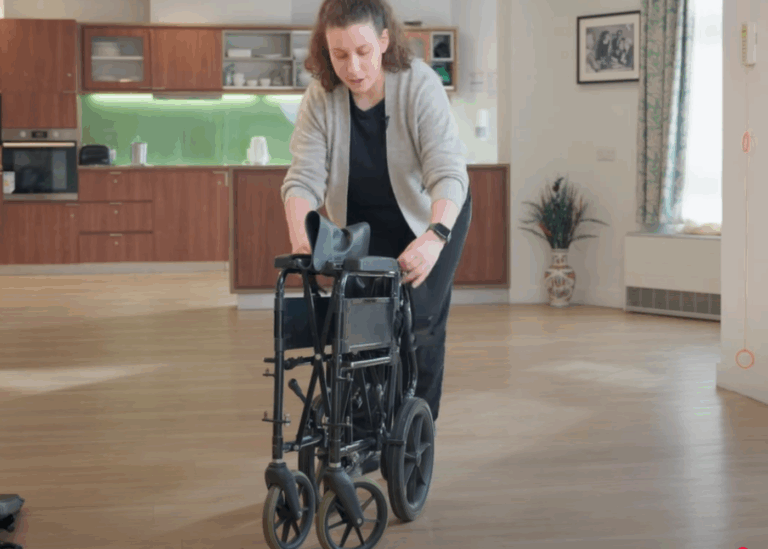
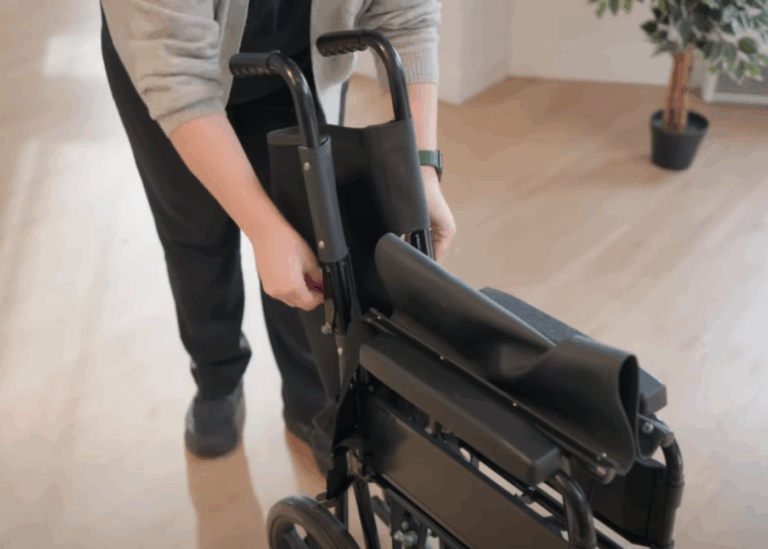
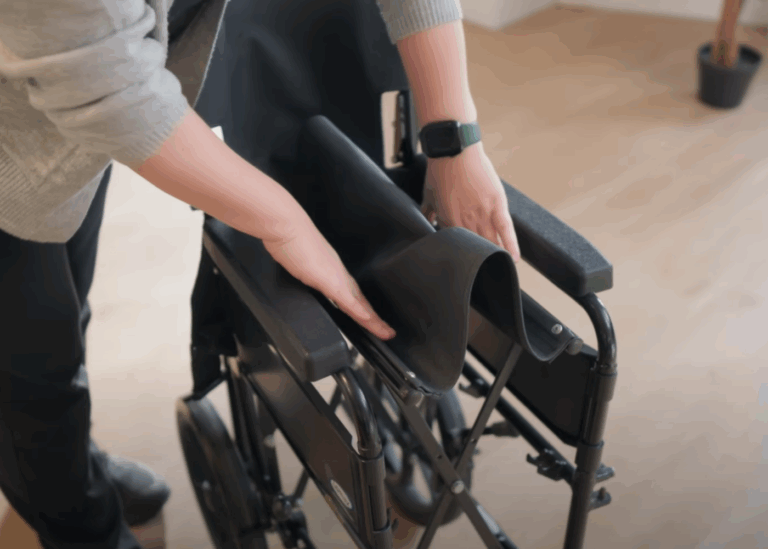



Meet our experts
Vanessa Marques
 Vanessa graduated from London South Bank University in 2022 with a Postgraduate Degree in Occupational Therapy. She brings a wealth of experience having worked with both children and adults in the NHS and various charity organisations, which include settings specialised in learning disabilities and palliative care. Vanessa has worked within the Therapy Team at Nightingale Hammerson since 2022, supporting residents through personalised therapeutic interventions to enhance independence, well-being and improve quality of life. Vanessa enjoys enabling residents to engage and participate in their meaningful activities and tasks, as well as supporting the learning and development of team members within the organisation.
Vanessa graduated from London South Bank University in 2022 with a Postgraduate Degree in Occupational Therapy. She brings a wealth of experience having worked with both children and adults in the NHS and various charity organisations, which include settings specialised in learning disabilities and palliative care. Vanessa has worked within the Therapy Team at Nightingale Hammerson since 2022, supporting residents through personalised therapeutic interventions to enhance independence, well-being and improve quality of life. Vanessa enjoys enabling residents to engage and participate in their meaningful activities and tasks, as well as supporting the learning and development of team members within the organisation.
Rosalind Gray

A compassionate and versatile Occupational Therapist and AHP Manager with over 30 years’ experience across the NHS, local authorities, private and charity sectors. I specialise in supporting adults with physical disabilities, dementia, rehabilitation needs, environmental adaptations, and palliative care. I’m committed to putting people at the centre of everything I do, delivering genuinely person-centred services and ensuring accessibility for all. I have a proven track record in interdisciplinary leadership, change management, innovation, creative problem-solving, service design, environmental adaptation, performance management, mentoring, customer service, and delivering outcomes that make a meaningful difference. In my spare time, I’m a passionate nature photographer!

Was this useful? Please let us know
Other topics you may be interested in
The resources available are not, and are not intended to be, medical advice, which should be tailored to your individual circumstances. The resources are for your information only, and we advise that you exercise your own judgment before deciding to use the information provided. Professional medical advice should be obtained before taking action. Full terms and conditions.






